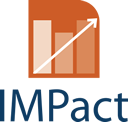Stimare il costo netto della misura
Lo scopo di questo capitolo è guidare gli Stati membri nella stima degli effetti sul bilancio delle loro misure SPF. Prima di illustrare i principali fattori da considerare per la stima dei costi di bilancio della misura, sono necessarie alcune osservazioni in merito alla valutazione dei costi netti e al livello e al finanziamento dell’intervento pubblico.
- In primis, è importante ricordare che i SPF comprendono servizi di vario tipo. Essi abbracciano attività di natura assistenziale e non assistenziale. Alla luce di questi fattori, il costo della politica dovrebbe essere valutato in base al tipo di servizio supportato. Ad esempio, i decisori politici potrebbero riscontrare che il costo netto pubblico di una politica a favore dei servizi assistenziali potrebbe essere superiore a quello di una politica per servizi non assistenziali, a fronte della natura stessa dei servizi. Questo capitolo intende fornire alcuni strumenti utili alla misurazione del costo netto delle politiche, non una valutazione degli stanziamenti massimi che le autorità pubbliche dovrebbero investire per ciascuna.
- Le misure SPF producono una serie di effetti di ritorno in grado di generare reddito per varie amministrazioni pubbliche e Pertanto si dovrebbe tenere conto dell’effetto netto complessivo della misura, non solo di quello di cui beneficia l’ente che lo promuove.
L’immagine sottostante sintetizza e semplifica gli aspetti fondamentali da considerare nell’analisi dei costi di bilancio di ciascuna misura
Come riportato nell’immagine, il costo netto della misura dovrebbe essere ottenuto sottraendo al costo pubblico lordo della misura i possibili effetti di ritorno. Fra questi ultimi, occorre distinguere fra effetti di ritorno derivanti da un aumento degli introiti ed effetti di ritorno prodotti da una riduzione dei costi.
|
Casella 2. Costo netto delle misure SPF in Belgio, Francia e Svezia Belgio: nel 2013, il costo pubblico lordo del sistema di servizi a voucher ammontava a € 1,93 milioni. L’operazione comprendeva l’intervento del governo attraverso i voucher, deduzioni fiscali per gli utenti e i costi operativi del sistema. Tuttavia, le valutazioni annuali del sistema condotte per conto del governo hanno individuato diversi effetti di ritorno, pari a: – fra € 937 e 961,9 milioni di incremento del reddito netto, principalmente da aumenti dei contributi sociali e delle tasse sul reddito delle persone fisiche; – fra € 339,3 e 453,3 milioni di costi evitati a conseguenza dei risparmi legati alla creazione di lavoro. In tal modo, tenendo conto di tutti questi effetti di ritorno, il costo netto del sistema di servizi a voucher ammonta, secondo le stime, a € 584.245.134, ovvero a € 3,901 per lavoratore. Francia: in base a uno studio di Wyman, il costo pubblico lordo delle misure SPF, nel 2010, è ammontato a € 6,2 miliardi. Dallo studio emerge che questo costo pubblico lordo, – formato da riduzioni e crediti fiscali e altri costi sociali e fiscali, – è ampiamente compensato da € 5.627 milioni di aumento netto dei redditi (derivante da contributi sociali aggiuntivi, introiti IVA, e così via) e da € 3.356 milioni di costi evitati (ovvero spese per le persone non indipendenti o di assistenza dei bambini). Nel complesso, il settore SPF porta al governo francese benefici pari a € 2.640 milioni, ovvero €5.060 per ogni lavoro a tempo pieno. Svezia: nel 2011, l’associazione dei datori di lavoro Företagarna ha svolto una valutazione dei costi/benefici del sistema RUT. L’analisi ha concluso che gli effetti di ritorno hanno superato i costi iniziali della misura. Fra il 2009 e 2010, il costo pubblico lordo è stato pari a 900 milioni di SEK (€ 96,59 milioni). Tuttavia, il reddito netto aumentato corrispondeva a 2.900 milioni di SEK (€ 311,23 milioni) grazie all’aumento degli introiti derivanti dalle tasse sulle imprese, da Iva e dai contributi sociali. Per una panoramica più dettagliata dei dati e dei risultati di questi studi, cliccare qui. |






![6[1]](http://impact-phs.eu/wp-content/uploads/2015/12/61-2.png)
